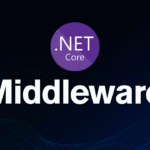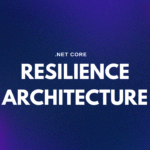Artificial Intelligence is evolving — not just in capability, but in behavior. The latest frontier is Agentic AI: systems that don’t just respond, but actively perceive, decide, act, and learn to achieve goals.
For .NET developers, this shift unlocks a new paradigm: building applications that are autonomous, adaptive, and context-aware.
What Is Agentic AI?
Agentic AI refers to AI systems that function as agents — software entities with the ability to:
- Perceive → Gather data from APIs, databases, sensors, or user input
- Decide → Evaluate options based on context, rules, or objectives
- Act → Trigger workflows, call services, or interact with applications
- Learn → Improve over time using feedback, monitoring, or retraining
Unlike traditional software that follows static rules, Agentic AI dynamically adapts its actions to pursue specific outcomes.
Why It Matters for .NET Developers
.NET applications already rely on structured workflows — APIs, background jobs, business logic, and data pipelines. Agentic AI doesn’t replace these; it enhances them by introducing intelligent decision-making.
Real-World .NET Scenarios
Automating Repetitive Workflows
Agents can choose the right flow based on context.
Example: A customer request might trigger a database query, a notification, or escalation — all decided dynamically.
Dynamic Orchestration
Agents can break down goals into steps and call C# methods in sequence.
Example: “Generate weekly sales summary” → Query DB → Aggregate → Format → Email
Context-Aware Developer Assistants
Internal tools powered by agents could Understand documentation, Query Azure resources, Scaffold boilerplate code, Automate deployments
All without rigid, pre-coded logic.
Tools to Get Started
.NET developers can explore Agentic AI through:
Microsoft Semantic Kernel –
Orchestrates AI agents
Exposes C# methods as callable skills
Supports dynamic planning and chaining
Azure AI Services –
Adds perception and decision-making to enterprise apps
Offers governance, scalability, and monitoring
Custom Orchestration Patterns –
Combine deterministic .NET services with agent-driven strategy
Agents decide when and how to use your reliable C# logic
Challenges to Address
- Control & Safety – Agents need guardrails: validation, permissions, monitoring
- Predictability – Agents aren’t Design for transparency and traceability
- Performance & Cost – Frequent decisions and service calls can add overhead Use caching, batching, and efficient orchestration
The Road Ahead
Agentic AI is the next logical step in enterprise software. Where traditional systems execute rules, agents pursue objectives.
For .NET developers, this isn’t about replacement — it’s about augmentation.
Learning Agentic AI today is like learning async/await or microservices when they first emerged. It feels new, but it’s on track to become the default for adaptive applications.
Conclusion
In conclusion, Agentic AI is not about replacing the fundamentals of .NET development, but about extending them. By giving applications the ability to perceive, decide, act, and learn, we unlock a new generation of intelligent systems that can adapt in real time to business needs. For developers, this means blending the reliability of .NET’s deterministic workflows with the flexibility of agent-driven orchestration. Those who start experimenting today — whether through Semantic Kernel, Azure AI services, or custom orchestration patterns — will be the ones shaping how enterprise software evolves in the coming years.








